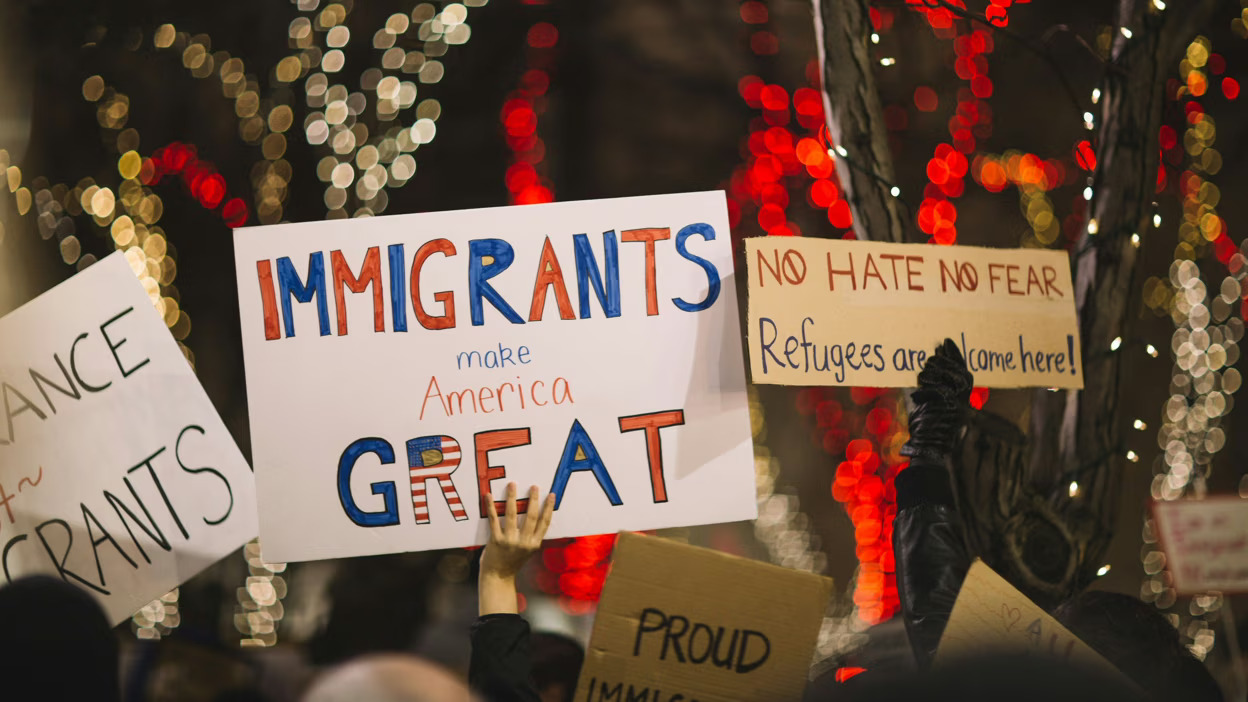Filter
Senate Legislative Process Must Maintain Spirit of Compromise
Washington D.C. – Today, the Senate Judiciary Committee begins “mark-up” of S. 744, the Border Security, Economic Opportunity, and Immigration Modernization Act. In an unprecedented move by Senate Judiciary Committee Chairman Patrick Leahy and Ranking Member Charles Grassley, all amendments have been made publicly available in order to make the process more transparent and inclusive. […]
Read MoreSenate Immigration Bill Mark-Up: What to Expect
Tomorrow, the Senate Judiciary Committee will begin the long awaited mark-up of S. 744, the “Border Security, Economic Opportunity, and Immigration Modernization Act,” the 844 page bill designed to overhaul our broken immigration system. We can expect some genuine efforts to improve the bill from both sides, but we can also expect a lot of […]
Read MorePresident Obama’ Trip to Latin America Highlights Important Mutual Economic and Security Ties
President Obama spent three days last week traveling to Mexico as well as Costa Rica—his first second-term trip to Latin America. Mexico is the United States’ third largest trading partner, behind Canada and China, in terms of total goods, and the U.S. is Mexico’s largest trading partner. In addition, the largest share of immigrants who […]
Read MoreAdding it Up: Accurately Gauging the Economic Impact of Immigration Reform
With immigration reform legislation now making its way through Congress, it is imperative that we estimate as accurately as possible the full range of potential economic costs and benefits associated with any particular bill. It is especially important to establish the proper criteria for a complete, robust, and accurate fiscal scoring of any bill by the Congressional Budget Office (CBO). To that end, we should consider the growing consensus of the economic literature on the strongly positive benefits of immigration in general and of the various aspects of immigration reform in particular, as calculated using a variety of different methodologies. The CBO would be well-advised to keep this consensus literature in mind as it establishes the criteria it will use for scoring immigration reform legislation.
More and more research demonstrates the economic benefits of immigration reform.
The last few years have witnessed a burst in economic research showing the strongly positive net impacts of immigration in general and comprehensive immigration reform (CIR) in particular. Broad agreement has emerged as to not only the net economic and fiscal benefits of immigration and CIR, but the acceleration of those benefits over time. Moreover, these conclusions have been arrived at in studies utilizing a variety of different methodological approaches. It is important to point out that each of these different approaches is limited by a focus on separate aspects of immigration reform (Table 1). A complete methodological framework accounting for all of the components of CIR produces the largest-scale benefits.
New Heritage Report Ignores Broad Consensus on Economic Benefits of Reform
Today, the Heritage Foundation released a report that attempts to assess the fiscal costs associated with legalizing the 11 million unauthorized individuals living in the United States. The new report is similar to a 2007 study, which was widely criticized at the time of publication and continues to be refuted today by conservatives like Republican budget […]
Read MoreBloated Estimate of Legalization Costs Ignores Immigration Reform’s Broader Economic Benefits
Washington D.C. – Today, the Heritage Foundation released a report which attempts to assess the fiscal costs associated with legalizing the 11 million unauthorized individuals living in the United States. The new report is similar to a 2007 study, which was widely criticized at the time of publication and continues to be re-rejected today by […]
Read MoreKeeping U.S. High-Skilled Temporary Worker Visa Programs Workable
When analyzing higher-skilled guest worker visa programs, such as the H-1B and L-1 programs, critics often fail to acknowledge the very different and important purposes that these programs were designed to serve, and the complicated requirements already in place to protect against abuse or exploitation. There is no denying that we can and should improve […]
Read MoreMoncrieffe v. Holder: Implications for Drug Charges and Other Categorical Approach Issues
Washington, D.C.—Last week, the Supreme Court issued a decision in Moncrieffe v. Holder, holding that a state drug conviction is not an aggravated felony when the statute of conviction extends to the social sharing of a small amount of marijuana. The case has important implications not only for noncitizens charged with drug trafficking, but also […]
Read MoreImmigration Activists Take to the Streets in May Day Rallies Around the Nation
Tens of thousands of people across the country—from New York to Vermont to California and Arizona—gathered at rallies and marches yesterday to demand immigration reform. Immigrants and advocates joined with labor groups, lawmakers, and other organizations for the May Day, also known as International Worker’s Day, demonstrations in dozens of cities. And their message was […]
Read MoreWhy There Are Not Enough STEM Workers in the U.S. Labor Market
Occasional research, such as a report released last week by the Economic Policy Institute, suggests the U.S. has a sufficient supply of science, technology, engineering, and mathematics (STEM) graduates and workers. However, these conclusions are at odds with a growing number of expert analyses that find the U.S. does in fact face significant challenges in […]
Read MoreMake a contribution
Make a direct impact on the lives of immigrants.
